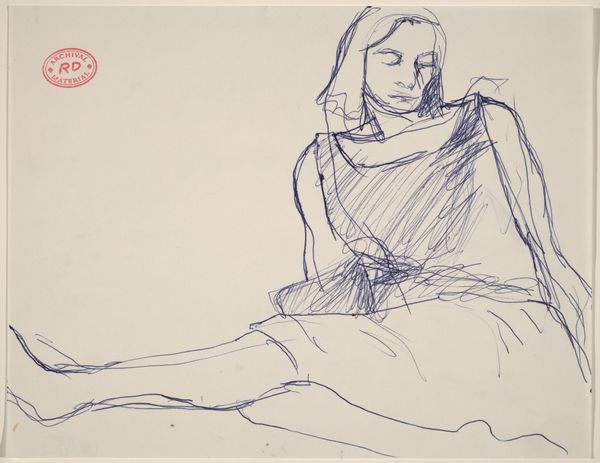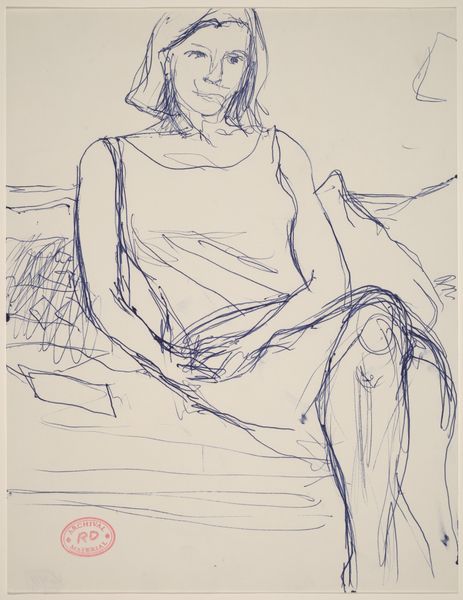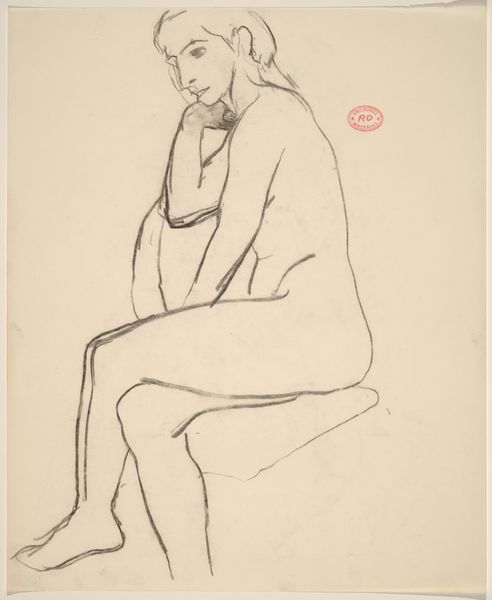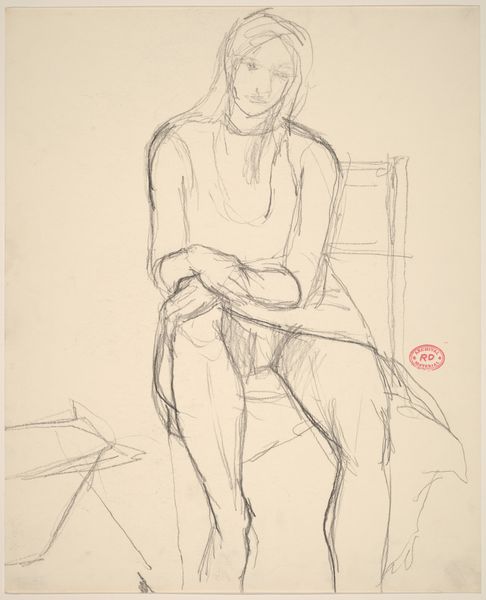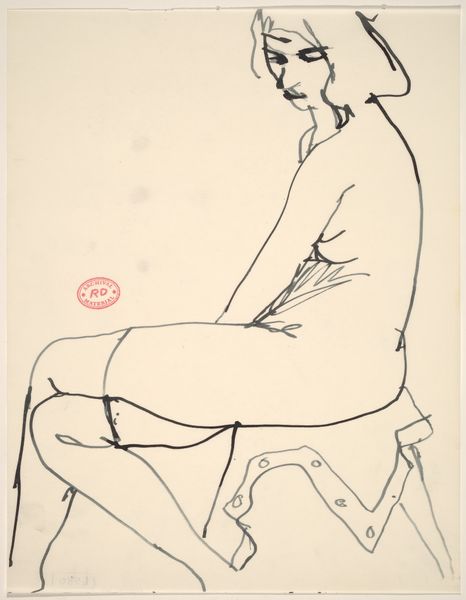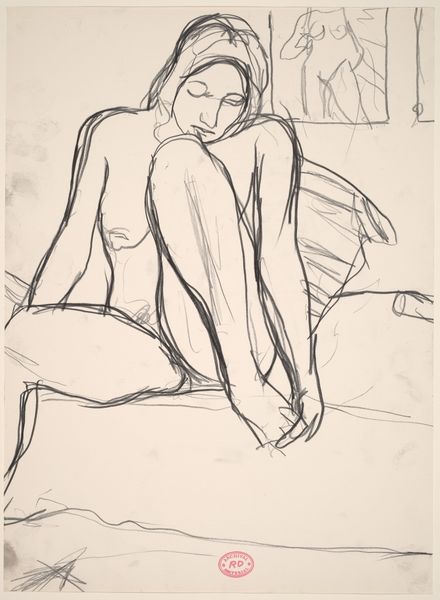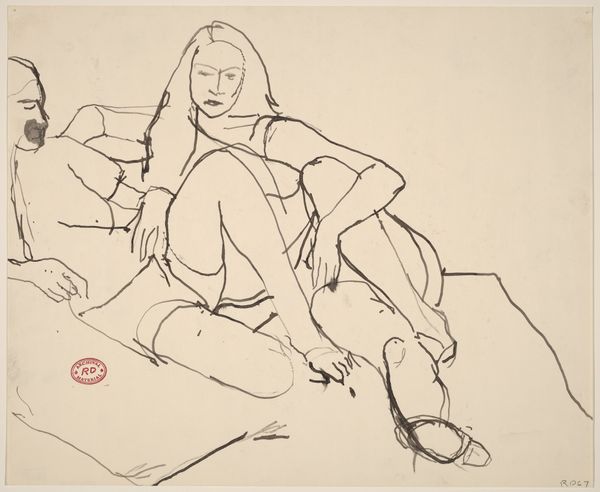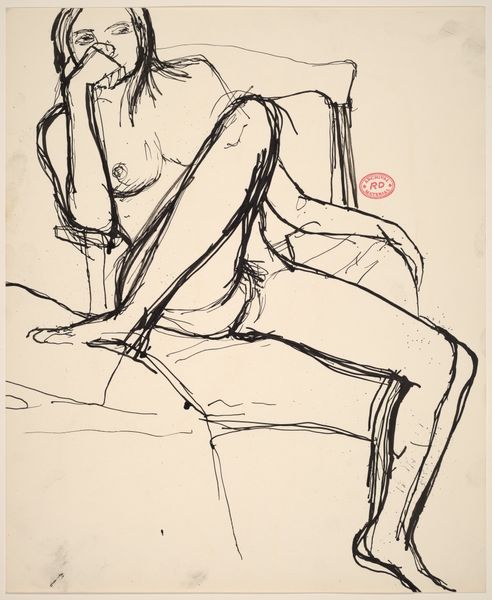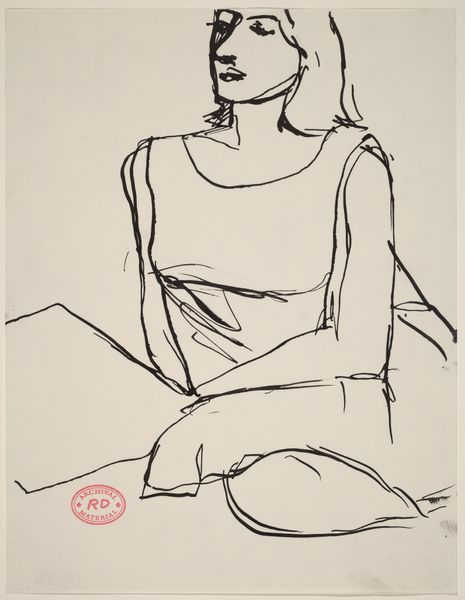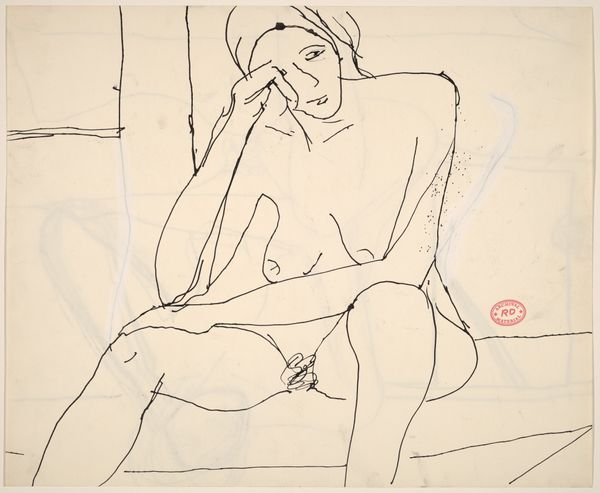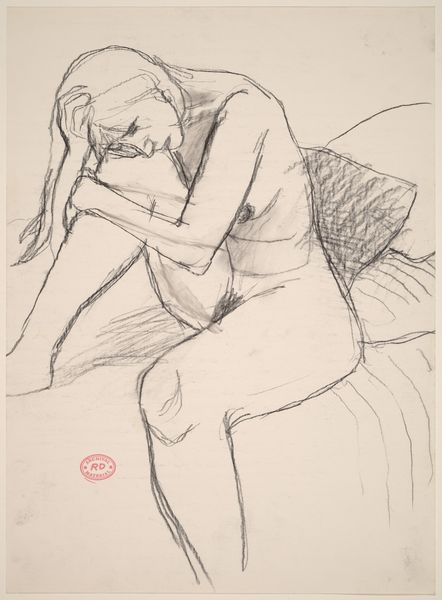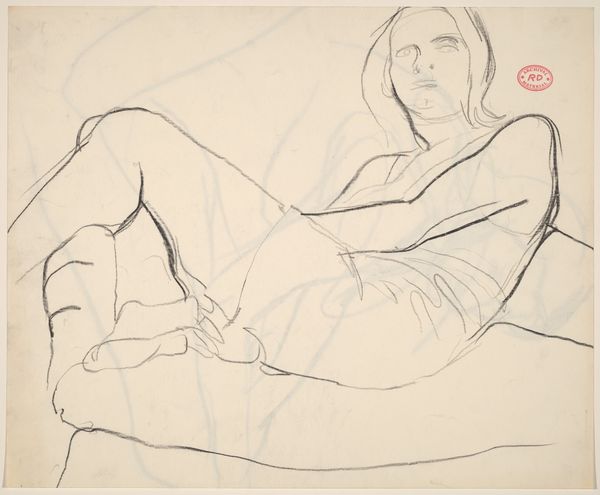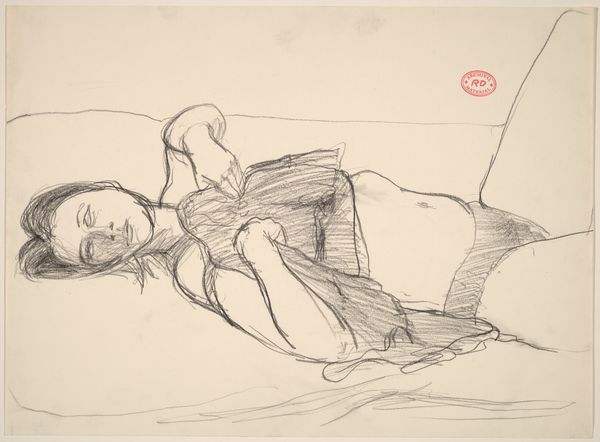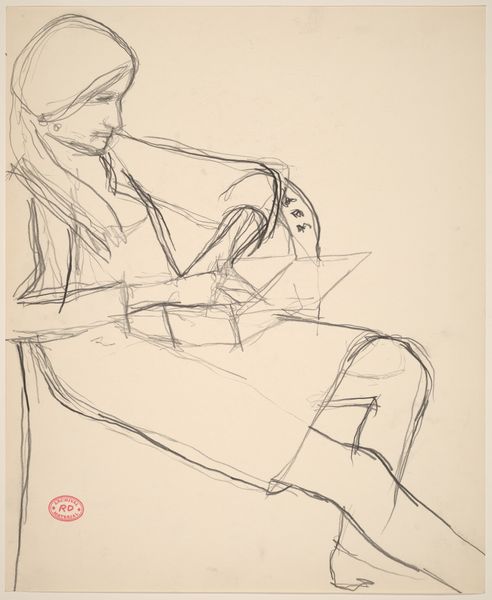![Untitled [seated nude resting her head on her left arm] by Richard Diebenkorn](/_next/image?url=https%3A%2F%2Fd2w8kbdekdi1gv.cloudfront.net%2FeyJidWNrZXQiOiAiYXJ0ZXJhLWltYWdlcy1idWNrZXQiLCAia2V5IjogImFydHdvcmtzL2Y1ZmEyOGE5LWI2M2YtNGM5MC04NzhkLTM5OWYyZWY4NmY1MS9mNWZhMjhhOS1iNjNmLTRjOTAtODc4ZC0zOTlmMmVmODZmNTFfZnVsbC5qcGciLCAiZWRpdHMiOiB7InJlc2l6ZSI6IHsid2lkdGgiOiAxOTIwLCAiaGVpZ2h0IjogMTkyMCwgImZpdCI6ICJpbnNpZGUifX19&w=3840&q=75)
Untitled [seated nude resting her head on her left arm] 1955 - 1967
0:00
0:00
drawing
#
drawing
#
ink drawing
#
figuration
#
bay-area-figurative-movement
#
line
#
nude
Dimensions: overall: 35.2 x 42.9 cm (13 7/8 x 16 7/8 in.)
Copyright: National Gallery of Art: CC0 1.0
Editor: So, this is an ink drawing by Richard Diebenkorn, likely created between 1955 and 1967, called *Untitled [seated nude resting her head on her left arm]*. It feels so simple and raw. What strikes me most is how vulnerable she seems, even in her repose. What do you see in this piece? Curator: What I find particularly interesting is the socio-cultural context in which this work was created. This was during the height of the Cold War, when anxieties about individual freedom and expression were heightened. How might the artist's choice to depict a nude figure, seemingly lost in thought, be a subtle commentary on the restrictions and pressures of the time? Editor: That's an interesting point, that vulnerability reflecting societal pressures. But it's also just a very intimate pose. Does that intimacy connect with the time period at all? Curator: Absolutely. Think about the evolving role of women in society during that period, too. While still largely confined to domestic roles, there was a growing awareness and discussion of women's issues and experiences. Diebenkorn, intentionally or not, might be giving space for this female figure to take centre stage, even if that stage is a seemingly quiet interiority. Editor: So it's not *just* a nude, it's a woman caught between societal expectations and the stirring of something more. What about the public perception of the artwork; how do you think it would be received if it was exhibited in galleries during that period? Curator: Given the rise of abstract expressionism, figurative work could be considered a more politically conservative approach at the time, with more radical politics favoring a rejection of the body altogether. Editor: I hadn’t thought about it like that. Now, I can see it, and the historical lens you bring makes the image much more compelling! Curator: Exactly! It's those kinds of contradictions and tensions that make studying art through the lens of history so enriching. There are always hidden dialogues waiting to be discovered.
Comments
No comments
Be the first to comment and join the conversation on the ultimate creative platform.
